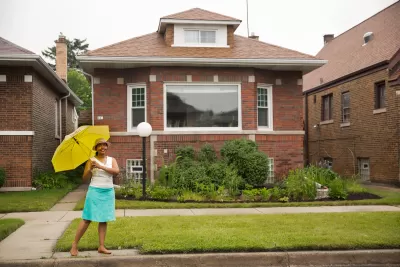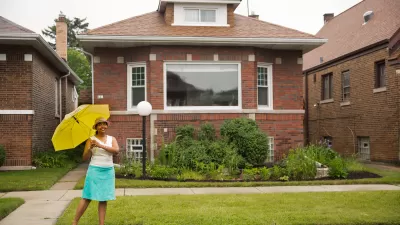There has been precious little progress over the past 50 years in bridging gaps of inequality for Black Americans.

"Fifty years after the historic Kerner Commission identified 'white racism' as the key cause of 'pervasive discrimination in employment, education and housing,' there has been no progress in how African Americans fare in comparison to whites when it comes to homeownership, unemployment and incarceration," reports Tracy Jan.
That news comes from a report released earlier this week by the Economic Policy Institute. Jan shares a few more specifics from the report, including this startling nugget: "The rate of homeownership, one of the most important ways for working- and middle-class families to build wealth, has remained virtually unchanged for African Americans in the past 50 years. Black homeownership remains just over 40 percent, trailing 30 points behind whites, who have seen modest gains during that time."
The Economic Policy Institute report is hardly the first proof of the long-term effects of racial discrimination in the housing market. The advancement of online mapping projects in recent years has also enabled several projects to expose the history of redlining that still has visible effects in the makeup of cities to this day.
FULL STORY: Report: No progress for African Americans on homeownership, unemployment and incarceration in 50 years

Maui's Vacation Rental Debate Turns Ugly
Verbal attacks, misinformation campaigns and fistfights plague a high-stakes debate to convert thousands of vacation rentals into long-term housing.

Planetizen Federal Action Tracker
A weekly monitor of how Trump’s orders and actions are impacting planners and planning in America.

San Francisco Suspends Traffic Calming Amidst Record Deaths
Citing “a challenging fiscal landscape,” the city will cease the program on the heels of 42 traffic deaths, including 24 pedestrians.

Defunct Pittsburgh Power Plant to Become Residential Tower
A decommissioned steam heat plant will be redeveloped into almost 100 affordable housing units.

Trump Prompts Restructuring of Transportation Research Board in “Unprecedented Overreach”
The TRB has eliminated more than half of its committees including those focused on climate, equity, and cities.

Amtrak Rolls Out New Orleans to Alabama “Mardi Gras” Train
The new service will operate morning and evening departures between Mobile and New Orleans.
Urban Design for Planners 1: Software Tools
This six-course series explores essential urban design concepts using open source software and equips planners with the tools they need to participate fully in the urban design process.
Planning for Universal Design
Learn the tools for implementing Universal Design in planning regulations.
Heyer Gruel & Associates PA
JM Goldson LLC
Custer County Colorado
City of Camden Redevelopment Agency
City of Astoria
Transportation Research & Education Center (TREC) at Portland State University
Jefferson Parish Government
Camden Redevelopment Agency
City of Claremont





























